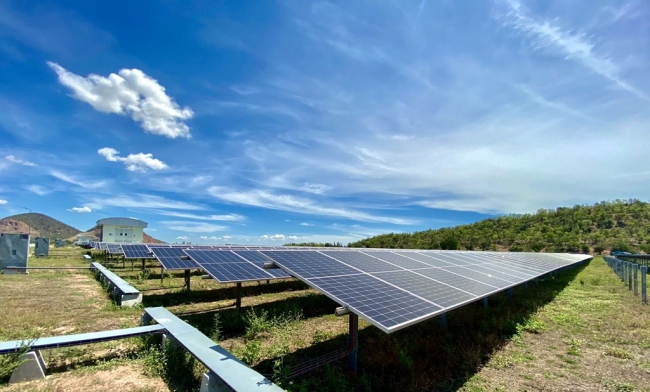What is the consequence of re-emergence of overrating module nominal power?
As the core part of solar power plant, the competition of PV modules might be the fiercest process in the whole industry. The power of modules is getting higher and higher from 500W+ to 600W+ and even 700W+, mostly driven by adopting higher efficiency cell tech and using larger wafers and module sizes. For now, the conversion efficiency of modules is risen to more than 22.1% from 21.3% after the application of n-type modules like n-IBC, n-HJT and n-TOPCon. Acting as the role of generating power, the reliability of modules will effect the stable operation and return on investment of a power plant.

1.Overrating module nominal power is re-emerged
With the rapid development and maturation of PV industry in recent years, many illegal phenomena has gradually faded. However, the competition is getting much fiercer when more and more corporates and manufacturing capacity are involved in this year and many issues are appeared once again such as low-quality, overrating nominal power and illicit competition. The vice-secretary of CPIA, Yiyang Liu, said that the total effective capacity will reach more than 700GW. There is no wonder why these issues appeared once again for many corporates are under severe pressure for survival.
At the present time, the power test standards of new cell tech like TOPCon is not aligned industrially, so there are some corporates which incline to choose loose standard and overrate their module nominal power for benefits. It is reported that a pile of modules sold to EU were bounced to manufacturer because their real power were 5-10W lower than nominal power after IV test by customer.
The nominal power means the power generated by modules under standard test condition, which is usually expressed by W. The nominal power is an indicator of module performance and closely related to its power generation.
The nominal power of a single module is determined by many factors like cell efficiency, CTM(cell to module) loss, module size, encapsulation method and others. The bigger the module size is, the nominal power will be higher but it doesn’t mean it has higher module efficiency.
Overrating power refers to the practice of exaggerating the actual power of a module and using parameters greater than its actual power to label its nominal power. Overrating nominal power can be mainly divided into two categories. One is in product promotion, where the advertised power of the module is significantly increased to exceed the achievable limit of module power, in order to attract attention and create hype. The other one is in product delivery, where low-power modules are falsely labeled as high-power modules and delivered to customers, which in some cases can be considered commercial fraud.
Currently, the mass production conversion efficiency of mainstream p-type PERC modules is around 21.3%, corresponding to a power output of 550Wp for 182 modules and 660Wp for 210 modules. The conversion efficiency of mainstream n-type TOPCon and HJT modules is close to 22.1%, corresponding to a power output of 570Wp for 182 modules. Due to the existence of a limited capacity of high-efficiency cells, the power output of modules made from these cells can be increased by 5-10W. Although this output is relatively small and paying attention to the manufacturer's delivery capabilities is necessary, it still falls within the range of real efficiencies and power outputs. However, modules that claim to have a power output of 20W or even higher than the current mainstream production require us to retain some doubts.
2.Overrating nominal power is severely harmful
The deviation between the nominal power and the actual power will cause direct loss for customers pay more money for non-existed watts and indirect loss for the plant can’t generate as much energy as design expectation.
Every single solar module panel is related to the brand of corporates and even the reputation of China manufacturing. All the participants of PV industry shall be responsible for the customers and stay patient to creating customer value by innovation. It is such a dangerous thing for all manufacturers to choose shortcut by overrating module nominal power for no longer paying attention to quality and technology.
3. How to solve the problem of overrating
The standardized golden module from different third-parties such as TÜV NORD, TÜV Rheinland, TÜV SÜD and China National Institute of Metrology will lead to different power test results. Generally speaking, power deviation in 5W is a normal range in industry but it will be alerting if the deviation is higher than that.
The China’s Consumer Protection Gala on 15th, March revealed some dishonest manufacturers and inferior products, which were mostly complained for using worse materials, overrating nominal power, jerry-building and OEM sales. These kinds of action threats the innovative and competitive capacity of PV manufacturers.
A director from a tier-one corporate expressed that the PV modules not only need to be the same between samples for certification and mass produced modules, but also need to be the same between actual parameters and nameplate. That is what authority needs to help to establish a much healthier industry environment.